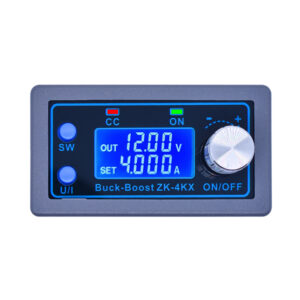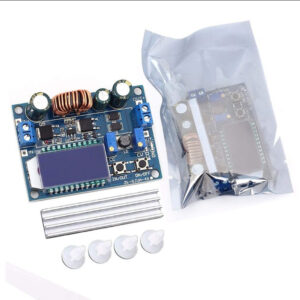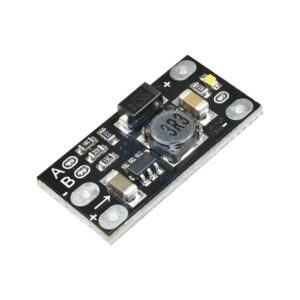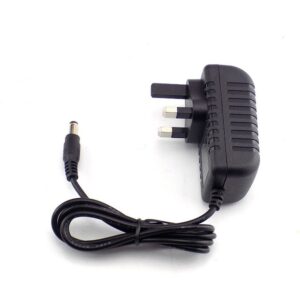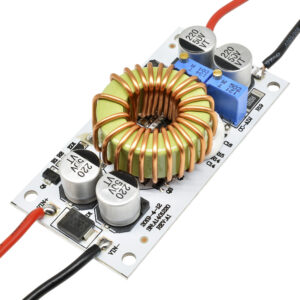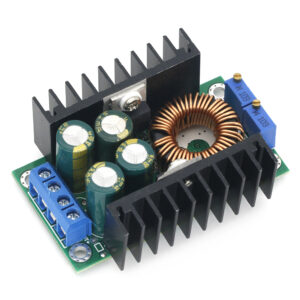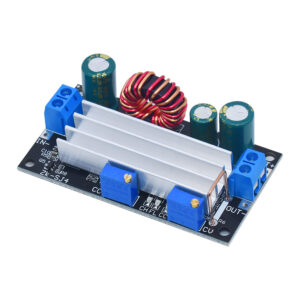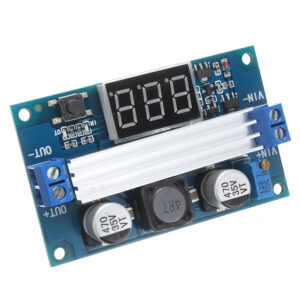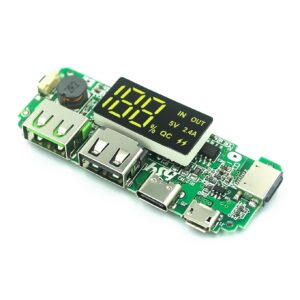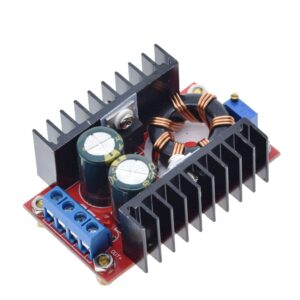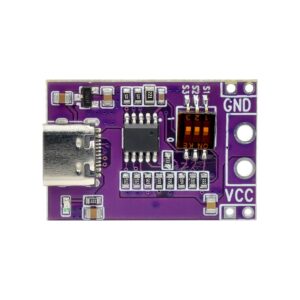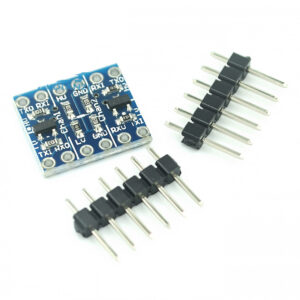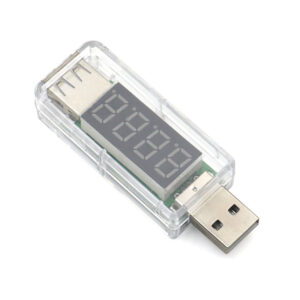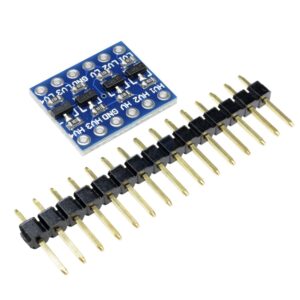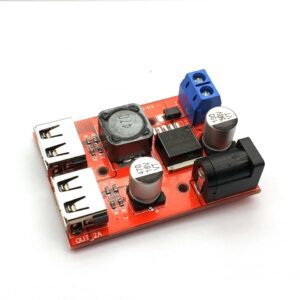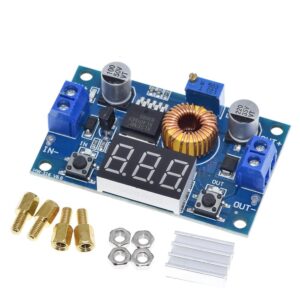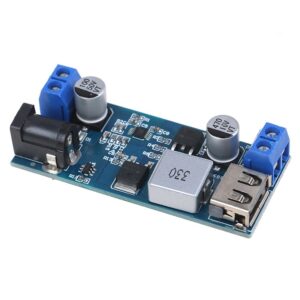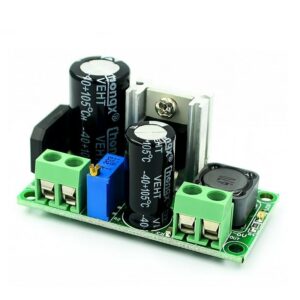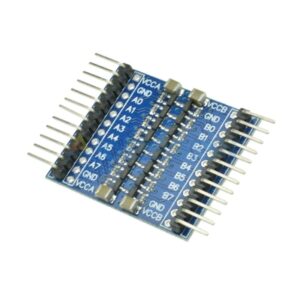DC to DC Converters
DC to DC Converter Modules
Explore our range of high-quality DC DC Converter Modules. Whether you need a buck converter, boost converter, or a buck-boost converter, we have a wide range of options available to meet your specific requirements. Our adjustable power converter modules are designed to provide stable output voltage and are perfect for various applications.
Explore our electronic testing equipment, soldering irons, WiFi & bluetooth microcontroller boards and FNIRSI oscilloscopes.
Showing 1–24 of 49 results
- £0.99 – £7.90 Select options This product has multiple variants. The options may be chosen on the product page
- £3.90 Select options This product has multiple variants. The options may be chosen on the product page
Showing 1–24 of 49 results
What DC-DC Converters we offer in KunKune
We have 3 types of DC DC Power Supply Modules:
- Boost or Step Up Converters to increase the voltage
- Buck or Step down Converters to lower the voltage
- Buck Boost Converters provides a stable output voltage
A power supply unit modifies an input voltage to an adjusted output voltage level, which can be lowered or raised. This indispensable power supply component is the base of every electronic project.
What Is a DC to DC Converter?
A DC-to-DC converter is an electronic circuit that converts a source of direct current (DC) from one voltage level to another, ensuring that the output voltage meets the required specifications for various applications; it often involves components like inductors and operates efficiently based on principles outlined by experts such as Haifeng Fan and Christophe Basso.
Types of DC to DC Converters
DC-to-DC converters come in various types, each designed for specific applications and efficiency requirements, including step-down, step-up or boost, and step-down/step-up converters, as well as more complex topologies like Single-Ended Primary Inductor Converter (SEPIC) and Ćuk, which frequently utilise FET switches to manage power conversion.
Buck Converter
A buck converter, also known as a step-down converter, reduces the input voltage to a lower output voltage, effectively managing the current to provide a stable power supply to electronic devices.
By regulating this voltage reduction process, a buck converter ensures that the output remains consistent, with minimal fluctuations. It achieves this by switching the input voltage on and off at a high frequency, controlling the duty cycle to adjust the output voltage accordingly. This mechanism allows the buck converter to efficiently step down the voltage and handle varying load conditions. The converter’s inductor and capacitor components play crucial roles in smoothing out the output signal, ensuring a clean and reliable power supply to the connected devices.
Boost Converter
A boost converter, or step-up converter, increases the input voltage to a higher level, storing energy in an inductor and releasing it to achieve the desired output voltage.
This process involves a switch, typically a transistor, which controls the flow of current through the inductor. When the switch is closed, the inductor stores energy from the input source in the form of a magnetic field. Then, when the switch opens, the inductor releases this stored energy, resulting in a higher output voltage than the input voltage. The capacitor in the circuit helps to smooth out any voltage fluctuations, ensuring a stable output. This mechanism is crucial in various applications where a consistent and higher voltage level is needed, such as in power supplies for electronic devices.
Buck-boost Converter
- A step-up-step-down converter can either increase or decrease the input voltage, with the ability to invert the output polarity, making it highly versatile for various electronic applications.
- One of the key features of step-up-step-down converters is their flexibility in managing input voltage changes. They are capable of automatically adjusting the output voltage to be higher or lower than the input, depending on the requirements of the connected components.
- The ability to invert the output polarity sets them apart from other types of converters. This feature allows for seamless integration into systems where the polarity of the output voltage needs to be reversed without the need for additional components or complex circuitry.
Here is the some of our products:
Buck Converters
- LM2596 Buck Converter
- Mini 360 Adjustable Step Down Power Supply Buck Converter
- 300W 9A Step Down Buck Converter 5-40V to 1.2-35V Power Supply Module
- 24V/12V To 5V 5A Step Down Power Supply Converter
- MP1584EN Small Adjustable Step Down Module
- Mini560 5V-20V To 3.3V/5V/9V/12V 5A Step Down Buck Converter
Boost Converters
- 150W 10A Step Up Boost Converter Power Supply Module (10-32V to 12-35V)
- 250W 10A Boost Converter Step Up Module (8-48V to 12-50V Adjustable)
- MT3608 Boost Converter Adjustable Module
- Mini Voltage Converter Step Up Module (5V, 8V, 9V, 12V Fixed Output Power Boost Module)
- LCD High Power Adjustable Boost Converter (3-35V 100W)
Buck-Boost Converters
- 4.8-30V to 0.5V-30V Buck Boost Converter 60W Constant Current Voltage
- Mini DC DC 3V-15V To Fixed 3.3V 4.2V 5V 9V 12V Buck Boost Module Converter
- XL6009E1 Step Up Boost Converter 3-32V to 5-35V
- ZK-4KX DC Buck Boost Converter CC CV 0.5-30V 4A Adjustable Regulated Power Supply
- LCD 60W Buck Boost Converter 0.5-30V 3A
- XL6009 DC-DC Stabilized Output Buck Boost
How Do DC to DC Converters Work?
The operation of DC-to-DC converters involves complex circuitry that manages the conversion of input voltage and current to a desired output level, ensuring efficiency and stability across various load conditions by averaging the power supply over time.
What Is the Role of Inductors and Capacitors in DC to DC Converters?
Inductors and capacitors play crucial roles in DC-to-DC converters, with inductors storing energy during the on-phase and releasing it during the off-phase, while capacitors smooth out voltage fluctuations, especially in continuous and discontinuous operation modes.
Inductors in DC-to-DC converters act as energy storage devices, allowing for a more stable current flow by resisting rapid changes in current. This characteristic results in a more controlled voltage output.
On the other hand, capacitors in these converters work to reduce output voltage ripples by providing a temporary reservoir for electrical energy. By storing and releasing charges, capacitors help maintain a steady voltage.
In continuous operation mode, the converter operates continuously to maintain a constant output voltage. Contrastingly, in discontinuous operation mode, the converter switches on and off based on load requirements, providing more flexibility in adapting to varying power needs.
Applications of DC to DC Converters
DC-to-DC converters are essential in numerous applications, providing stable power output in various circuits by managing resistance and utilising diodes to ensure efficient energy conversion.
Power Supplies for Electronic Devices
DC-to-DC converters are widely used in power supplies for electronic devices, providing the necessary output voltage to ensure the proper functioning of laptops, smartphones, and other gadgets.
These converters play a crucial role in maintaining a steady voltage level, converting input voltage from a power source like a battery or adaptor to the specific voltage required by the device. By adjusting voltage levels, these converters protect sensitive components and circuits from damage caused by fluctuations. They enhance energy efficiency by minimising power loss during conversion.
DC-to-DC converters come in various types including step-up, step-down, and buck-boost converters, each serving different purposes based on the requirements of the application. The versatility of these converters allows them to be integrated into a wide range of electronic equipment, making them essential in modern technology.
Solar Power Systems
In solar power systems, DC-to-DC converters are crucial for optimising the energy harvested from solar panels, converting the variable output voltage to a stable level suitable for storage or direct use.
These converters play a vital role in ensuring that the energy generated by solar panels is efficiently utilized, enhancing the overall performance of the system. By efficiently managing the voltage levels, DC-to-DC converters help prevent issues like overcharging or undercharging of batteries, which can significantly prolong their lifespan. They allow for compatibility between different components of the system, ensuring seamless integration and maximum energy yield.
Advantages of DC to DC Converters
DC-to-DC converters offer numerous advantages, including high energy and power efficiency, continuous operation, and the ability to precisely manage voltage and current levels in various applications.
One of the key benefits of DC-to-DC converters is their ability to efficiently convert power from one voltage level to another, minimising energy loss and heat generation. This efficiency not only helps in reducing energy consumption but also contributes to lower operating costs in the long run.
With the capability for continuous operation, DC-to-DC converters provide a reliable power source without interruptions, making them ideal for critical applications that require a stable power supply at all times.
Along with efficiency and continuous operation, the precise management of voltage and current levels by these converters ensures that electronic devices receive stable and regulated power, which is essential for their optimal performance and longevity.
Disadvantages of DC to DC Converters
Despite their benefits, DC-to-DC converters can have disadvantages such as circuit complexity, increased resistance, higher costs, and challenges in maintaining optimal operation state under varying conditions.
One of the drawbacks associated with the circuit complexity of DC-to-DC converters is the increased number of components required, leading to a more intricate design that can be challenging to troubleshoot and repair.
The increased resistance in these converters can result in energy losses through heat dissipation, reducing efficiency and potentially shortening the lifespan of the device.
The higher costs involved in purchasing and implementing DC-to-DC converters compared to simpler alternatives can be a significant deterrent for some consumers.
Ensuring that these converters operate optimally under varying conditions requires careful monitoring and adjustments, which can add to the overall maintenance complexity and cost.
Factors to Consider When Choosing a DC to DC Converter
When choosing a DC-to-DC converter, it is essential to consider various factors such as input and output voltage ratings, efficiency, size, weight, and cost to ensure the chosen converter meets the specific requirements of the application.
Input and Output Voltage Ratings
The input and output voltage ratings of a DC-to-DC converter are critical parameters that determine its suitability for a particular application, ensuring that the converter can handle the required voltage levels without compromising performance.
When selecting a DC-to-DC converter, it is essential to match the input voltage rating with the power source to avoid damage to the device.
Choosing a converter with a wide input voltage range can offer flexibility in different setups. On the other hand, the output voltage rating determines the voltage level supplied to the load, impacting the overall system efficiency.
Efficiency
Efficiency is a crucial factor in DC-to-DC converters, as higher efficiency means lower power loss and more effective energy conversion, which is vital for applications requiring long-term power stability.
When a DC-to-DC converter operates with high efficiency, it generates less heat, reducing the need for additional cooling measures and enhancing the overall reliability of the system. This not only saves energy but also prolongs the lifespan of the components involved. Improved efficiency can lead to cost savings in the long term, making it an essential consideration in the design and operation of power systems. By optimising efficiency, engineers can ensure that the energy supplied is utilised effectively without unnecessary waste, resulting in a more sustainable and eco-friendly approach to power management.
Size and Weight
Size and weight are important considerations when selecting a DC-to-DC converter, especially in applications with design constraints, as smaller and lighter converters can provide the necessary power without adding significant bulk.
Choosing the right size and weight can directly impact the overall efficiency and portability of the system. A compact and lightweight converter allows for a more streamlined design, reducing space requirements and making it easier to integrate into the existing setup. In applications where mobility is key, such as in portable electronic devices or automotive systems, the size and weight of the converter play a crucial role in determining the overall user experience. It is essential to strike a balance between power requirements and physical dimensions to ensure optimal performance and functionality.
Cost
Cost is a significant factor in choosing a DC-to-DC converter, as it must align with budget constraints whilst still delivering the necessary performance and reliability for the intended application.
When selecting a DC-to-DC converter, the cost considerations extend beyond the upfront purchase price. It is imperative to assess the total cost of ownership, factoring in maintenance, efficiency, and any potential downtime costs. Additionally, choosing a cost-effective converter does not mean compromising on quality. Manufacturers offer a range of options that strike a balance between affordability and performance, ensuring that your system operates optimally without breaking the bank. Thorough evaluation of the features, specifications, and long-term benefits will help you make a wise investment decision.
How to Select the Right DC to DC Converter for Your Application?
Selecting the right DC-to-DC converter for your application involves evaluating the specific requirements, such as performance, efficiency, and environmental conditions, to ensure optimal compatibility and reliability in operation.
When assessing performance, it is crucial to consider factors like voltage regulation, load capability, and transient response to guarantee that the converter can meet the varying demands of your system.
Efficiency plays a significant role in determining the overall energy consumption and heat dissipation of the converter, affecting the system’s overall performance. Pay attention to efficiency ratings at different load levels to select a model that aligns with your power requirements.
Take into account your application-specific needs, such as input/output voltage range, footprint restrictions, and electromagnetic interference considerations, to narrow down the options that best suit your unique operational conditions.

